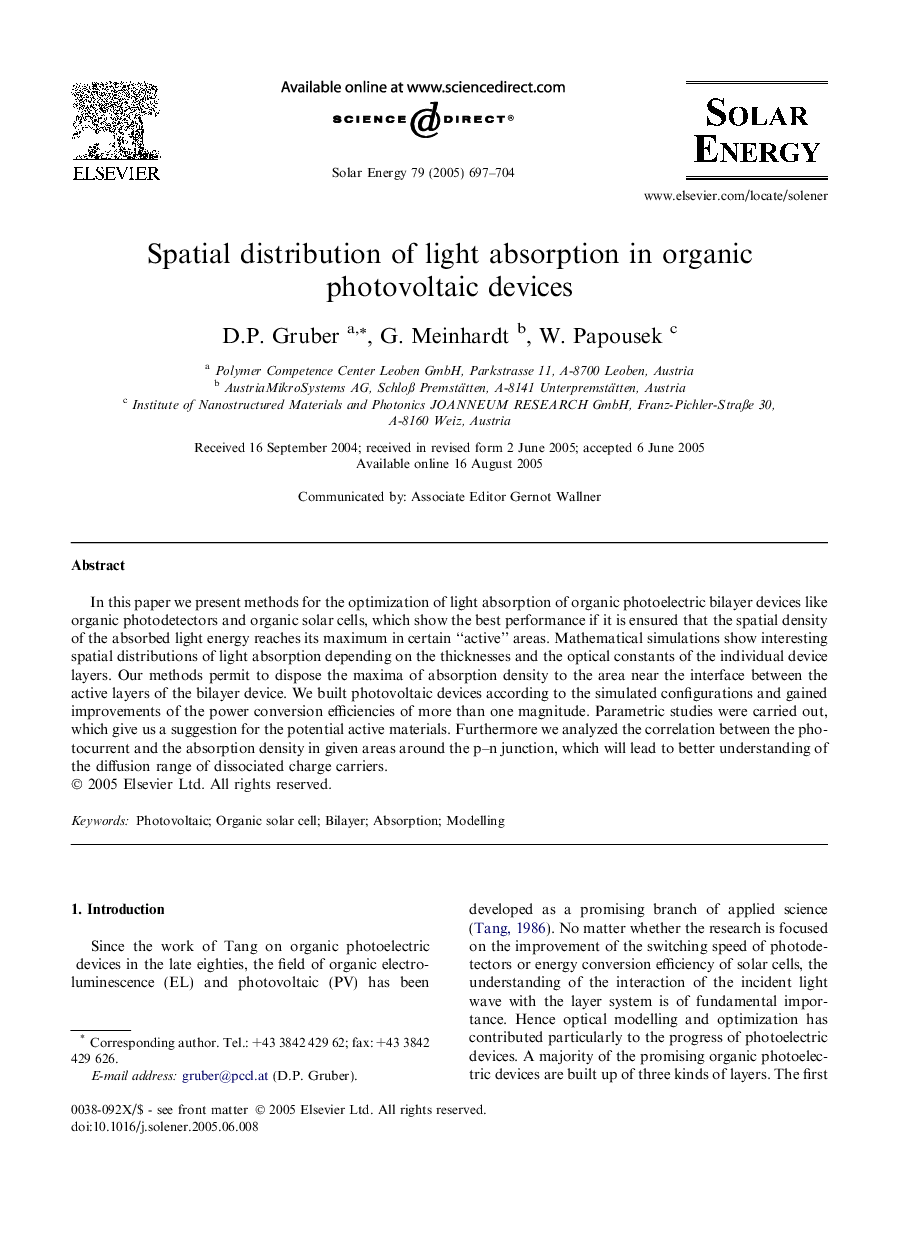| Article ID | Journal | Published Year | Pages | File Type |
|---|---|---|---|---|
| 10643089 | Solar Energy | 2005 | 8 Pages |
Abstract
In this paper we present methods for the optimization of light absorption of organic photoelectric bilayer devices like organic photodetectors and organic solar cells, which show the best performance if it is ensured that the spatial density of the absorbed light energy reaches its maximum in certain “active” areas. Mathematical simulations show interesting spatial distributions of light absorption depending on the thicknesses and the optical constants of the individual device layers. Our methods permit to dispose the maxima of absorption density to the area near the interface between the active layers of the bilayer device. We built photovoltaic devices according to the simulated configurations and gained improvements of the power conversion efficiencies of more than one magnitude. Parametric studies were carried out, which give us a suggestion for the potential active materials. Furthermore we analyzed the correlation between the photocurrent and the absorption density in given areas around the p-n junction, which will lead to better understanding of the diffusion range of dissociated charge carriers.
Related Topics
Physical Sciences and Engineering
Energy
Renewable Energy, Sustainability and the Environment
Authors
D.P. Gruber, G. Meinhardt, W. Papousek,
